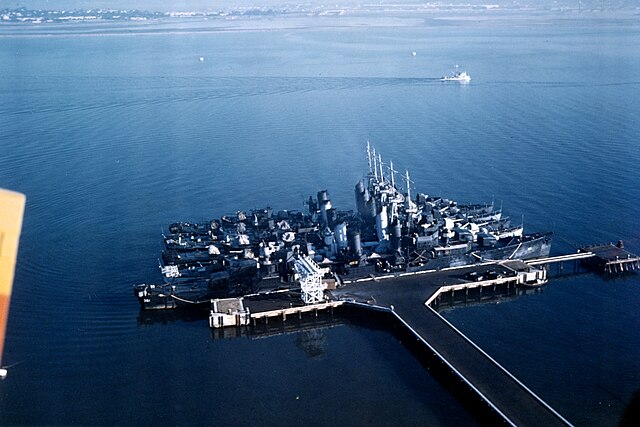Thornycroft type destroyer leader
The Thornycroft type leader or Shakespeare class were a class of five destroyer leaders designed by John I. Thornycroft & Company and built by them at Woolston, Southampton for the Royal Navy towards the end of World War I. They were named after historical naval leaders. Only Shakespeare and Spenser were completed in time for wartime service. The other three were completed after the war, Broke and Keppel after being towed to Royal dockyards for completion, and two further ships - Saunders and Spragge - were cancelled. The function of a leader was to carry the flag staff of a destroyer flotilla, therefore they were enlarged to carry additional crew, offices and signalling equipment, allowing a fifth gun to be carried. These ships were very similar to the Admiralty type leader, but had Thornycroft design characteristics, the most noticeable being the broad, slab-sided funnels.
HMS Keppel
A flotilla leader was a warship of late 19th century and early 20th century navies suitable for commanding a flotilla of destroyers or other small warships, typically a small cruiser or a large destroyer. The flotilla leader provided space, equipment and staff for the flotilla commodore, including a wireless room, senior engineering and gunnery officers, and administrative staff to support the officers. Originally, older light or scout cruisers were often used, but in the early 1900s, the rapidly increasing speed of new destroyer designs meant that such vessels could no longer keep pace with their charges. Accordingly, large destroyer designs were produced for use as leaders.
Dubrovnik, a large destroyer design built as a flotilla leader
Ships of US Destroyer Squadron 3 at San Diego in 1941, with the visibly larger Porter-class flotilla leader USS Clark in front



